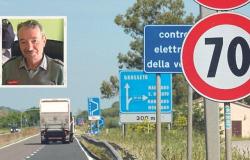Preparations are underway for the 36th edition of the International Marconi day, also scheduled in La Spezia for Saturday 27 April 2024 at the Naval Technical Museum of La Spezia. The event is international and this year, on the occasion of the 150th anniversary of the birth of Guglielmo Marconi, “unites via air” the historical sites linked to the life and research activity of the Bolognese scientist.
“Also in this edition – we read in a note from the Navy -, in the historic cultural institute of the Navy, a radio station will be set up managed by radio amateurs belonging to the local sections of the Italian Radio Amateurs Association, the Italian Sailors Radio Amateur Association and the Coordination of Italian Marconian Stations. It is thanks to the support of the Navy that Guglielmo Marconi carried out the first experiments in wireless communications from land to sea, in La Spezia. Using the resources of the Arsenal and the know-how of civilian and military personnel, Marconi took a fundamental step in the summer of 1897”.
In particular, the Naval Technical Museum of La Spezia preserves a document of inestimable value relating to those pioneering days: the original tapes, known as “telegraphic zones”, containing the messages in Morse alphabet exchanged during what was the first radiotelegraphic communication between land and sea in history.
These extraordinary and unique documents will be presented to the public in two daily sessions: at 10am and 4pm, with the collaboration of volunteers from the International Wireless Studies group. The Enigma machine, famous for its fundamental role in encrypted communications during the Second World War, will be shown and explained in two appointments, at 11am and 5pm. There will be a space dedicated to children, curated by the Italian Radio Amateur Association, where they will be able to try their hand at the telegraph key and experience telegraphy for themselves.
The relations between Guglielmo Marconi and the Navy were always very close. “The Armed Force, in fact, was able to invest early in the ingenuity of the young Bolognese, supporting him in his research and giving him material support through its modern La Spezia Arsenal and the skills of its men, both military and civilian. Marconi reciprocated by granting his inventions which were then used but also developed by Navy personnel – continues the Navy note -. During the First World War, from lieutenant of the Engineers, Marconi passed on application to the sea draft, achieving the rank of captain of complement corvette. Promoted to frigate captain in 1920, he entered the Naval Reserve in 1932, reaching the rank of admiral a year before his death. The Royal Decree n. 819 of 1932 (significantly called the “Marconi Law”), according to which the appointment as a complement officer of the Royal Navy could, and still can, be granted to those citizens in possession of marked professionalism, was desired by the Navy with Marconi in mind, to continue to make use of its innovative contribution in the technological field”.
“Today, if on a modern ship, be it military or civil, you can have the same communication configuration – concludes the note – that you have on land, thanks to satellites and the most sophisticated technologies, it is thanks to Guglielmo Marconi and the own principles which are still the solid basis for every type of communication today, from simple radiotelephony to the most sophisticated exchange of data of all kinds”.
Tags: ready International Marconi day Naval Technical Museum Spezia





